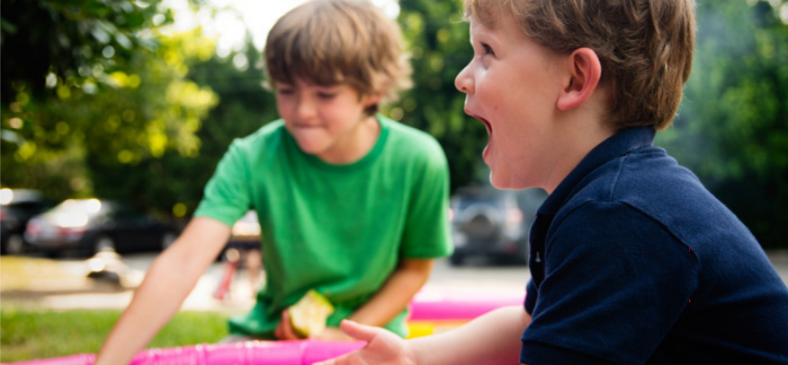Table of Contents
Upper Cervical Care – Benefits for the Whole Family
There are many benefits to upper cervical chiropractic care in general and specifically when children are involved. However, you may wonder if upper cervical care is safe for your child. Also, what types of conditions can be helped with this unique subspecialty of chiropractic care?
Safe for the Entire Family
Upper cervical chiropractors focus on the C1 and C2 vertebrae that are located at the base of the skull. Misalignments of these two bones can have far-reaching effects due to their proximity to the brainstem, vertebral arteries, and other key structures of the central nervous system (CNS), vascular system, and vestibular system. Mere fractions of a millimeter can make a difference.
Upper cervical specific care involves precise measurements of the C1 and C2 using modern diagnostic imaging techniques. Because adjustments are so precise, there is no twisting or jerking motion. There is no pain associated with the adjustment. Relief is often immediate, and the benefits only grow as time passes with the C1 and C2 in the proper location. It is so gentle that everyone, from great-grandparents to infants can benefit. Yes, upper cervical chiropractic truly can be FAMILY CARE.
How Could My Child Have A Misalignment?
This is a common question that parents ask. However, there are many ways to get an upper cervical misalignment. The C1 and C2 are responsible for more than half of the movement of the head, but along with this additional mobility comes a greater risk of the bones becoming misaligned. Here are some examples of ways that a child could end up with an upper cervical misalignment:
- At birth – A difficult childbirth could be behind an upper cervical misalignment. However, even during normal childbirth, the head may be bent or twisted in ways that result in misalignment.
- As an infant – It can take up to 6 months after birth for a baby’s neck muscles to develop to the point where the child has full head control. Most babies begin to lift their heads for the first time by a month old. But it can take up to four months before an infant can hold up his or her head while in a sitting position.
- While at play – From playing around the house to hanging out on the playground at school, there are plenty of opportunities for kids to trip, fall, and suffer a misalignment. Kids are pretty resilient, so most will feel okay just moments after a fall, but if a misalignment occurred, it could work under the surface for months or years to cause symptoms.
- Car accidents – A car seat can save a child’s life when an accident occurs. However, it may not stop all damage from occurring. Anything that can jar the neck can cause misalignment.
These are just a few ways that a child may have ended up with an upper cervical misalignment, perhaps even months or years ago.
Childhood Health Conditions That May Be Related to the C1 and C2
We don’t have room to discuss every condition that may be related to a C1 and C2 misalignment, but here are some of the more common ones:
- Headaches/Migraines – According to the children’s hospital of Wisconsin, 40% of children have their first headache by age 7. According to one case study, a 9-year-old boy who used to get 10 migraines and tension headaches per month had a history of trauma and an upper cervical misalignment. After upper cervical chiropractic, his headaches and migraines completely resolved.
- Back/neck pain – As much as half of children over the age of 4 suffer from back pain. In one study, upper cervical chiropractic completely relieved back pain for an 8-year-old in under 5 months.
- Scoliosis – An upper cervical doctor treated a 10-year-old girl six times for a 35-degree idiopathic (cause unknown) scoliosis. After 25 weeks, the scoliosis was reduced to 25 degrees, and the results were independently confirmed.
- Seizures – 0.5% of people suffer from a seizure condition. Most cases of idiopathic (cause unknown) seizures begin in childhood. One case study involved a 5-year-old girl who suffered from 30-70 seizures per day, despite medicinal treatment. On the 27th day following upper cervical chiropractic, the seizures stopped for four weeks (no change in medicine dosage).
- ADHD – In a 2014 case study, an 11-year-old boy with ADHD received upper cervical care twice a week for three months. Following care, the child had better TOVA (test of variables of attention) scores.
- Post-concussion syndrome – Concussions are growing common among children, especially those who play competitive sports. A 16-year-old girl suffered headaches, dizziness, neck pain, and cognitive issues following a concussion. Upper cervical chiropractic completely resolved her headaches and neck pain. Her dizziness and cognitive symptoms also improved by 60%.
These are just some of the conditions where upper cervical chiropractors have published case studies regarding the benefits of care for children.
Upper Cervical Care for Children
If your child has a history of any of the types of injuries noted above or is suffering from any of the conditions mentioned in this article (especially if the cause seems to be a mystery), an upper cervical misalignment may be at work. An upper cervical chiropractor can pinpoint and precisely measure the misalignment and provide a safe and effective adjustment. This, in turn, may result in the lessening or elimination of a number of health problems and symptoms.

